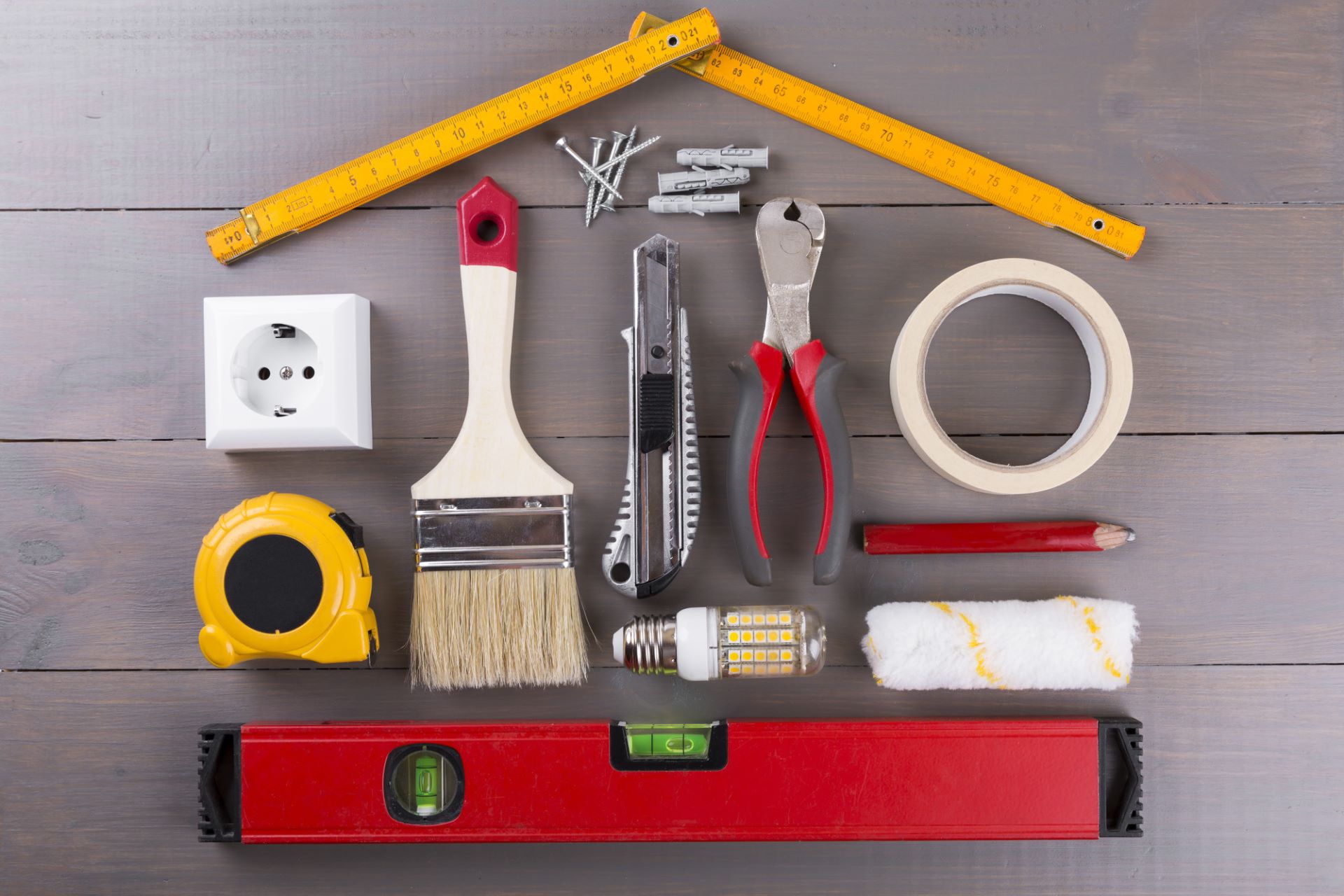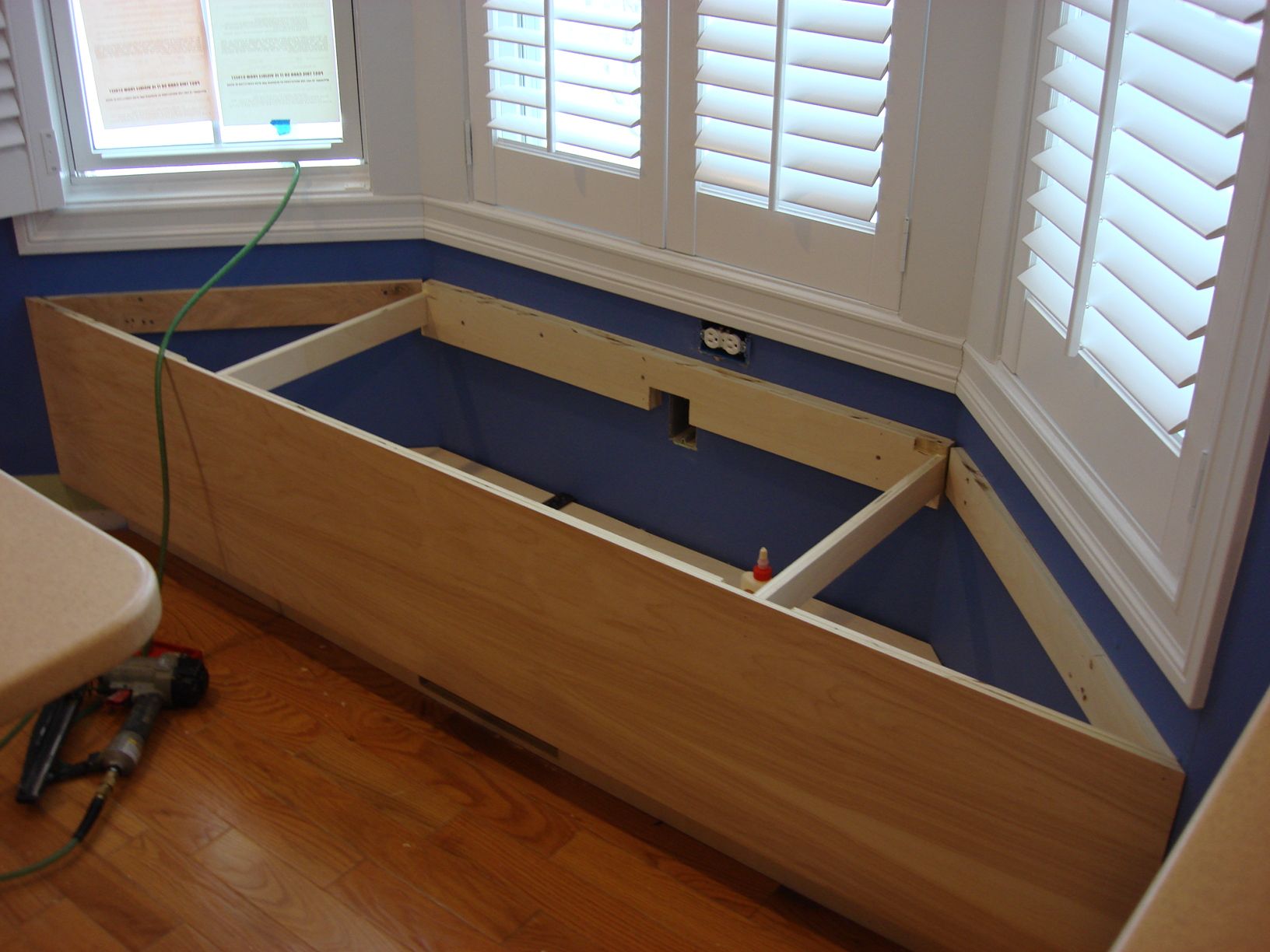Home>diy>Building & Construction>How To Lien A Construction Project


Building & Construction
How To Lien A Construction Project
Modified: December 7, 2023
Learn how to properly lien a construction project and protect your interests. Our step-by-step guide covers everything you need to know about building-construction liens.
(Many of the links in this article redirect to a specific reviewed product. Your purchase of these products through affiliate links helps to generate commission for Storables.com, at no extra cost. Learn more)
Introduction
Construction projects can be complex and involve multiple parties, from contractors and subcontractors to suppliers and lenders. With so many stakeholders involved, it’s important to ensure that all parties are paid for their work and materials. That’s where construction liens come into play.
A construction lien is a legal claim against a property that secures payment for work done or materials supplied on that property. It provides contractors and other construction professionals with a way to protect their rights and ensure compensation for their services.
In this article, we will walk you through the process of lien filing for a construction project. From determining eligibility for a lien to enforcing and releasing the lien, we will cover each step in detail to help you navigate the sometimes complicated world of construction liens.
By understanding the process and requirements associated with construction liens, you can take the necessary steps to protect your rights and ensure proper compensation for your work.
Whether you are a contractor, subcontractor, supplier, or another party involved in the construction project, this guide will provide you with the knowledge you need to navigate the lien filing process successfully.
Now, let’s dive into the details of how to lien a construction project.
Key Takeaways:
- Understanding construction liens is crucial for contractors, subcontractors, and suppliers to secure payment. Fulfilling notice requirements, filing the claim of lien, and enforcing the lien are essential steps in protecting their rights and recovering payment.
- Releasing the construction lien after receiving payment is a critical final step. It demonstrates professionalism, resolves outstanding debt, and clears the property title, ensuring positive relationships and legal compliance.
Read more: What Is A Lien In Construction
Understanding Construction Liens
Before we dive into the process of filing a construction lien, it’s essential to have a clear understanding of what exactly a construction lien is and why it is important in the construction industry.
A construction lien, also known as a mechanic’s lien or a materialman’s lien, is a legal claim that allows contractors, subcontractors, suppliers, and other construction professionals to seek payment for work performed or materials supplied on a construction project. This lien serves as security for the amount owed to these parties, ensuring that they are compensated for their contributions.
Construction liens are governed by specific laws and regulations that vary from state to state. It is essential to familiarize yourself with the specific lien laws in your jurisdiction to ensure compliance and protect your rights.
One of the primary purposes of a construction lien is to level the playing field and provide a fair method for contractors and suppliers to collect payment for their work. Without a construction lien, they could be left unpaid if the property owner or other stakeholders fail to fulfill their payment obligations.
Construction liens also play a crucial role in encouraging timely payments in the construction industry. Property owners and other parties involved in the project are aware that a lien can be placed on the property if payments are not made, which serves as a powerful motivator to settle outstanding debts.
It’s important to note that a construction lien does not automatically guarantee payment. It is a legal tool that helps contractors and suppliers enforce their rights and secure a claim against the property. However, it may require further legal action and proceedings to fully enforce the lien and collect payment.
In summary, construction liens play a vital role in the construction industry by providing a means for contractors to secure payment for their work and materials. It is essential for contractors, subcontractors, suppliers, and other construction professionals to understand the purpose and legal implications of construction liens before proceeding with the lien filing process.
Step 1: Determine Eligibility for a Construction Lien
Before filing a construction lien, it is crucial to determine your eligibility to do so. Each jurisdiction has specific requirements that must be met in order to qualify for a construction lien. Here are some key factors to consider:
- Role and Scope of Work: Typically, only those who have directly contributed to the construction project, such as contractors, subcontractors, and suppliers, are eligible to file a construction lien. Understanding your role and the scope of work you have performed or the materials you have supplied is essential in determining your eligibility.
- Contractual Relationship: In many jurisdictions, having a direct contractual relationship with the property owner is a prerequisite for filing a construction lien. This means that if you are a subcontractor, you may need to ensure that there is a written agreement between the general contractor and the property owner before you can proceed with filing a lien.
- Notice Requirements: Some jurisdictions may require specific notice requirements to be met before filing a construction lien. This may include providing a preliminary notice to the property owner or other parties involved in the project within a certain timeframe. Failure to comply with these notice requirements may result in the loss of your right to file a lien.
- Statutory Deadlines: Construction liens must be filed within a specific timeframe, known as the statutory deadline, after the last date you provided labor or materials to the project. It is important to familiarize yourself with the deadline in your jurisdiction and ensure that you file the lien within the prescribed timeframe.
- Valid Documentation: To support your claim for a construction lien, you will typically need to gather and maintain accurate documentation. This may include contracts, invoices, delivery receipts, and any other relevant records that demonstrate your involvement in the project and the amount owed to you.
Determining your eligibility for a construction lien is the first step in the lien filing process. It is crucial to carefully review the specific laws and regulations in your jurisdiction and consult with legal professionals if necessary to ensure that you meet all the necessary requirements. Eligibility requirements may vary, so it is vital to research the rules specific to your area to protect your rights and maximize your chances of successfully filing a construction lien.
Step 2: Notice Requirements
Once you have determined your eligibility to file a construction lien, the next step is to understand and fulfill any notice requirements that may be necessary before proceeding with the lien filing process.
Notice requirements vary from jurisdiction to jurisdiction, so it’s important to carefully review the specific laws and regulations in your area. Here are some common types of notice requirements you may encounter:
- Preliminary Notice: In some jurisdictions, you may be required to provide a preliminary notice to the property owner, general contractor, or other relevant parties within a specific timeframe. This notice serves as an early warning that you have provided or will be providing labor or materials to the project and that you may file a construction lien if you are not paid.
- Notice of Intent to Lien: Before filing a construction lien, some jurisdictions require you to send a Notice of Intent to Lien to the property owner or the general contractor. This notice informs them of your intention to file a lien if payment is not received within a specified timeframe.
- Notice to Owner: A Notice to Owner is a type of notice that informs the property owner of your involvement in the project and your intent to secure a construction lien if necessary. This notice is typically sent at the beginning of the project to establish your presence and rights as a contractor or supplier.
- Notice of Non-Payment: If you have not been paid for your work or materials within the stipulated timeframe, you may need to send a Notice of Non-Payment to the property owner, general contractor, or both. This notice formally communicates that payment is overdue, and you intend to file a construction lien if the outstanding amount is not settled.
It is important to note that failure to comply with the specific notice requirements in your jurisdiction may result in the loss of your right to file a construction lien. Therefore, it is crucial to thoroughly understand and fulfill these requirements within the specified timeframe to protect your rights and preserve your lien rights.
Consulting with legal professionals who specialize in construction law can be beneficial during this step. They can ensure that you meet all the necessary notice requirements and provide guidance specific to your jurisdiction.
By fulfilling the notice requirements, you establish clear communication with the parties involved in the construction project, indicating your intent to secure compensation for your work or materials. This proactive approach can potentially lead to resolution without the need for filing a construction lien, as it alerts the property owner and other parties of the consequences of non-payment and encourages timely payment.
Understanding and complying with the notice requirements in your jurisdiction is a critical step in the lien filing process. By doing so, you lay the foundation for protecting your rights and maximizing your chances of successfully recovering payment for your contributions to the construction project.
Before starting a construction project, make sure to file a preliminary notice to protect your right to file a lien later on if necessary. This can help ensure you get paid for your work.
Step 3: Filing the Claim of Lien
After fulfilling any notice requirements, the next step in the construction lien filing process is to formally file the claim of lien. This step involves submitting the necessary documentation and paperwork to the appropriate authority in your jurisdiction.
Here are the key steps to follow when filing a claim of lien:
- Gather Required Documentation: Before filing the claim of lien, gather all the necessary documentation to support your claim. This may include copies of contracts, invoices, delivery receipts, and any other relevant records that demonstrate your involvement in the project and the amount owed to you. Ensure that all documentation is accurate and up to date.
- Complete the Claim of Lien Form: Obtain the claim of lien form from the appropriate authority in your jurisdiction. This form may have specific sections to fill out, including your name and contact information, the property owner’s name, a legal description of the property, the amount owed, and other relevant details. Take care to provide accurate and complete information on the form.
- Notarize the Claim of Lien: In some jurisdictions, the claim of lien may need to be notarized. This involves having the document officially certified by a notary public, who will verify your identity and witness your signature. Check the requirements in your jurisdiction regarding notarization.
- File the Claim of Lien: Once the claim of lien form is completed and notarized (if required), submit it to the appropriate authority in your jurisdiction. This may be a county recorder’s office, a clerk of court, or another designated office. Pay any filing fees that may be required at the time of submission.
- Keep Copies for Your Records: After filing the claim of lien, make multiple copies of the document for your records. It’s important to have copies of all filed documents, including proof of submission and any related correspondence, in case they are needed later during the enforcement process.
It’s worth noting that each jurisdiction may have specific requirements and procedures for filing a claim of lien. Therefore, it is important to thoroughly review the laws and regulations in your area or consult with legal professionals specializing in construction law to ensure compliance with the specific requirements.
By properly filing the claim of lien, you establish a legal claim against the property, securing your right to payment for the work performed or materials supplied. The filing of the claim of lien notifies the property owner and other parties involved that you have a legal interest in the property and are seeking payment for your contributions.
Keep in mind that timely filing is crucial, as missing the deadline could result in the loss of your right to file a construction lien. Stay organized, be diligent in completing the required forms, and follow the proper procedures to ensure the success of the lien filing process.
Read more: What Is A Construction Lien Waiver
Step 4: Enforcing the Lien
After filing the claim of lien, the next step is to enforce the lien to secure payment for the work performed or materials supplied. This step involves taking legal action to assert your rights and recover the amount owed to you.
Here are the key steps to consider when enforcing a construction lien:
- Review Lien Laws and Deadlines: Familiarize yourself with the specific lien laws and deadlines in your jurisdiction. Each jurisdiction may have different requirements, procedures, and timelines for enforcing a construction lien. It’s important to comply with these laws and deadlines to protect your rights and maximize your chances of collection.
- Consult with Legal Professionals: Engage the services of legal professionals with experience in construction law. Enforcing a construction lien can involve complex legal processes, negotiations, and potential disputes. An attorney or other legal expert can guide you through the enforcement process, provide advice, and represent your interests should the need arise.
- Send a Demand Letter: Prior to initiating formal legal proceedings, it may be beneficial to send a demand letter to the property owner or other parties involved. The demand letter should outline the details of the lien, the amount owed, and a deadline for payment. The letter serves as a final opportunity for resolution before resorting to a lawsuit.
- File a Lawsuit: If the demand letter fails to yield the desired outcome, filing a lawsuit can be the next step. The lawsuit will formally commence the legal process of enforcing the lien. Your attorney will guide you through the necessary steps, including drafting and filing the lawsuit, gathering evidence, and presenting your case in court.
- Attend Mediation or Settlement Negotiations: In some cases, prior to or during the litigation process, mediation or settlement negotiations may be required or initiated. These sessions provide an opportunity for parties involved to reach a mutually agreeable resolution outside of court. Your attorney will represent your interests and advocate for the best possible outcome during these proceedings.
- Obtain a Judgment and Collection: If the lawsuit proceeds to trial and the court rules in your favor, a judgment will be issued in your favor. This judgment affirms your right to the amount owed. However, obtaining the actual payment may require further collection efforts, such as garnishing wages, placing a lien on other assets, or working out a payment plan.
Enforcing a construction lien can be a complex and time-consuming process. It is essential to work closely with legal professionals who can guide you through the steps, ensure compliance with the law, and navigate any legal challenges that may arise.
Additionally, keep records of all correspondence, documents, and evidence related to the enforcement process. Having organized and comprehensive documentation will support your case and help maximize your chances of a successful outcome.
Remember, the enforcement process varies depending on your jurisdiction and the specific circumstances of your case. Working with legal professionals who specialize in construction law will provide you with the expertise and guidance needed to navigate the complexities of enforcing a construction lien effectively.
Step 5: Release of Lien
After successfully enforcing the construction lien and receiving payment for the work performed or materials supplied, it is important to proceed with the final step: the release of the lien. Releasing the lien is necessary to clear the property title and legally acknowledge that the debt has been satisfied.
Here are the key steps to consider when releasing a construction lien:
- Verify Payment: Before releasing the lien, verify that you have received full payment for the outstanding amount. It is crucial to ensure that all amounts owed, including interest and any associated costs, have been settled before proceeding with the release.
- Prepare a Release of Lien Form: Obtain a release of lien form from the appropriate authority in your jurisdiction or consult with legal professionals who can provide you with the necessary documentation. The form may require details such as your name, contact information, the property owner’s name, a legal description of the property, and the amount of the lien being released.
- Complete and Execute the Release Form: Fill out the release of lien form accurately and completely. Ensure that all required fields are properly filled, and the information provided is correct. Sign and date the form, and have it notarized if required by your jurisdiction.
- Deliver the Release to the Property Owner: Once the release of lien form is completed, deliver it to the property owner or their authorized representative. It is important to provide the release in a timely manner to facilitate the removal of the lien from the property title.
- File the Release with the Appropriate Authority: Depending on your jurisdiction, you may need to file the release of lien form with the appropriate authority, such as the county recorder’s office or clerk of court. Filing the release ensures that the lien is officially removed from the property records.
Releasing the construction lien demonstrates your fulfillment of the debt and clears any encumbrance on the property. It is a crucial step, as failure to release the lien can have legal consequences and may adversely impact your reputation in the industry.
It is important to remember that the specific requirements and procedures for releasing a construction lien may vary by jurisdiction. Familiarize yourself with the laws and regulations in your area or consult with legal professionals who specialize in construction law to ensure compliance with the specific requirements.
By completing the release of lien process, you not only demonstrate your professionalism and commitment to resolving the outstanding debt but also maintain positive relationships with the property owner and other parties involved in the project.
Overall, properly completing and filing the release of lien allows you to fully close the chapter on the construction lien, ensuring that all aspects of the project are concluded in a satisfactory and legally compliant manner.
Conclusion
Filing a construction lien is an important step in protecting the rights of contractors, subcontractors, suppliers, and other construction professionals. Understanding the lien filing process and diligently following each step is crucial to ensure that you are properly compensated for your work or materials.
In this article, we have explored the key steps involved in liening a construction project. We began by discussing the purpose and importance of construction liens, emphasizing their role in securing payment and incentivizing timely payments in the construction industry.
We then walked through each step of the lien filing process, starting with determining eligibility for a construction lien. By understanding your role, the scope of work performed, and the specific requirements in your jurisdiction, you can establish your eligibility and take the necessary steps to protect your rights.
We then discussed the importance of fulfilling any notice requirements, including preliminary notices, notices of intent to lien, notice to owner, and notices of non-payment. These notices are crucial in establishing communication and providing formal warning before proceeding with the actual lien filing.
Next, we explored the process of filing the claim of lien, including gathering documentation, completing the claim of lien form, notarizing if required, and submitting the form to the appropriate authority. Properly filing the claim of lien establishes a legal claim against the property and notifies the involved parties of your intent to secure payment.
We then discussed the enforcement of the lien, which may involve sending demand letters, initiating lawsuits, attending mediation or settlement negotiations, obtaining a judgment, and pursuing collection efforts. This step requires careful adherence to applicable laws and procedures, along with the guidance of legal professionals well-versed in construction law.
Lastly, we covered the importance of releasing the lien once payment is received, ensuring that all requirements and procedures for releasing the lien are met. Releasing the lien demonstrates your commitment to resolving the debt and clears the property title from any encumbrance.
In conclusion, the process of liening a construction project requires careful attention to detail, understanding of applicable laws and deadlines, and working closely with legal professionals when necessary. By following each step correctly, you can protect your rights and increase the likelihood of receiving proper compensation for your contributions to the construction project.
Remember, specific laws and regulations regarding construction liens may vary by jurisdiction. It is important to consult with legal professionals specializing in construction law and familiarize yourself with the laws in your area to ensure compliance and maximize your chances of a successful lien filing process.
By navigating the lien filing process effectively, you can safeguard your interests and maintain a fair and transparent working environment within the construction industry.
Frequently Asked Questions about How To Lien A Construction Project
Was this page helpful?
At Storables.com, we guarantee accurate and reliable information. Our content, validated by Expert Board Contributors, is crafted following stringent Editorial Policies. We're committed to providing you with well-researched, expert-backed insights for all your informational needs.















0 thoughts on “How To Lien A Construction Project”